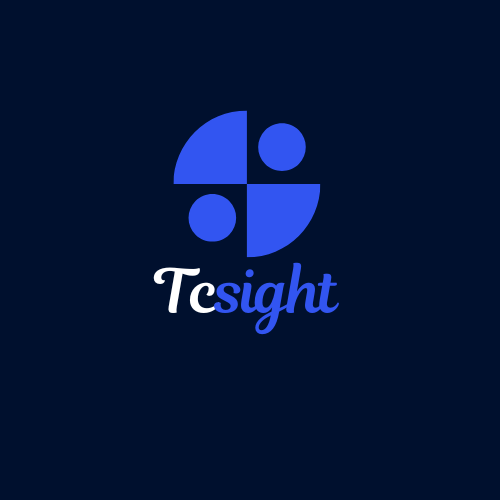
This is the Cloud transition hack and if you’re an entrepreneur, looking for solutions to scale up your business operations without sacrificing quality of service delivery while improving cost effectiveness, then this is for you.
Cloud and Cloud Computing, what is it?
From an engineer’s perspective, “Cloud” derives from the technical term Cloud Computing, which the National Institute of Science and Technology (NIST) defines as a computing model that delivers convenient, on-demand network services from a shared pool of resources (such as storage, applications, networks, and servers) that can be rapidly provisioned with minimal supervision or interaction with service providers. Simply put, cloud computing is a way of delivering computing services like storage, processing power, and software, over the internet, rather than using local servers or personal computers. It allows users, (business owners) to access and manage their data and applications remotely and intelligently I must say, making it easier to upscale resources when the need arises and reduce costs effectively. It’s the next generation of IT O’s & M’s. Now that we’ve settled that, let’s explore the categories of Cloud Services.
Entrepreneurs Perspective
As an entrepreneur, relying on traditional on-premise architecture for your business in today’s tech-savvy world isn’t the smartest move and I’ll explain why. Have you ever heard about or experienced a surge in online traffic, watched sales soar, only to suddenly crash and burn? That’s often because those businesses were running on a centralized platform, which has a critical weakness: a “single point of failure”, once any element fails, be it a node in the network or storage or a bug in a code, everything fails.
Take a look back at the COVID-19 pandemic. Many companies with centralized IT operations faced total shutdowns, leaving them with no path to recovery, because the online traffic was enormous. Just imagine the financial implications that resulted! This highlights why transitioning to the Cloud is essential for you as an entrepreneur.
The Cloud operates on a decentralized model, meaning you can say goodbye to those frustrating server crashes and the risks that come with them. With features like Auto Scaling and Disaster Recovery as a Service, your business gains resilience. You no longer need to pour money into maintaining excessive IT infrastructure just to handle periodic traffic spikes, only to let it sit redundantly most of the time. And if disaster strikes, whether through fire or vandalism, you can rest easy knowing your services will keep running, thanks to countless backup servers spread across the continent.
Still wondering if it’s time to make the leap to the Cloud? Keep reading to discover more!
Cloud Computing Services
As an entrepreneur still skeptical about doing business as usual in the Clouds, you have to know the kinds of services available and here are a few of them. In cloud computing, the cloud service provider owns, manages and maintains the assets; the customer consumes them via Internet connection, and pays for them on a subscription or pay-per-use basis. Most cloud computing services fall into five broad categories: Software as a service (SaaS), Platform as a service (PaaS), Infrastructure as a service (IaaS), Anything/Everything as a service (XaaS), Function as a Service (FaaS), each offering different levels of control and customization.
Software as a Service (SaaS)
Software as a Service (SaaS), the most popular cloud service, allows users to host and run their software applications on the Internet. With this concept, users no longer have to worry about installing, updating or managing software. Some key examples are Fintech, Email Clients like Gmail, online storage drives like Dropbox or Google Drive etc. The main advantage of this model is that if you make use of SaaS, your clients can access your service from anywhere in the world as long as there’s network coverage and in case you have new updates for the service, all you need do, is upload the update from one end (admin) and everybody in the world gets the new update automatically, very easy right. Some of the key benefits of SaaS include,
Platform as a Service (PaaS)
Platform as a Service (PaaS), allows businesses to develop and deploy their own applications on a cloud platform without worrying about the “platform”. This means that businesses can focus on building and improving their applications without the need to manage servers, networks, etc. PaaS providers offer various tools and services, including development frameworks, automated deployment processes, to streamline the development lifecycle. Some of the benefit of PaaS include,
User-Friendly and Accessible: This service provides essential IT infrastructure and services that users can easily access from any location.
Cost-Effective: The service bills users based on their usage, which reduces the need for upfront investments in physical infrastructure.
Streamlined Lifecycle Management: The platform manages all stages of a web application’s lifecycle, including development, testing, deployment, management, and updates.
Development Efficiency: By offering higher-level programming with less complexity, it enhances the overall effectiveness of application development.
Infrastructure as a Service (IaaS)
IaaS, Infrastructure as a Service (IaaS) gives businesses access to virtualized computing resources such as virtual machines and storage. While this model offers the highest level of control over the infrastructure, it also demands more technical expertise. With IaaS, organizations can configure and manage their infrastructure just like physical servers, allowing for enhanced customization and control. This makes IaaS ideal for companies with specific needs or those that prefer complete oversight of their computing environment. Few of its benefits include,
Cost-Effective: it eliminates capital expense and reduces ongoing cost. So customers pay on a per-user basis, typically by the hour or week.
Website hosting: Running websites using IaaS can be less expensive than traditional web hosting.
Security: The IaaS Cloud Provider may provide better security than your existing software.
Maintenance: There is no need to manage the underlying data center or the introduction of new releases of the development. This is all handled by the IaaS Cloud Provider.
Everything as a Service (XaaS)
Next, on our list is the Xaas, Everything as a Service. XaaS comprises all of the cloud services including some additional services like Disaster Recovery as a Service (DRaaS), etc. With Everything as a Service, businesses are open to a plethora of services, and it’s benefit is purely financial. Here are a few key concepts that accompanies it,
Benefits of XaaS
Cost Efficiency: Businesses can scale XaaS services up or down according to their dynamic needs, without resource constraints. This adaptability enables organizations to respond swiftly to market demands while efficiently allocating resources.
Increased Agility: With XaaS, companies can swiftly access and deploy new technologies and services without requiring extensive setup. This agility empowers businesses to quickly react to market shifts, drive innovation, and stay competitive.
Faster Time-to-Market: XaaS accelerates software deployment, updates, and maintenance, allowing businesses to implement services quickly. This speed translates to faster product and service launches, enhancing time-to-market.
Access to Cutting-Edge Technology: XaaS gives organizations access to advanced technologies, such as AI, machine learning, and analytics, without the need for in-house expertise or infrastructure investment.
Enhanced Security and Compliance: XaaS providers typically offer strong security measures and adhere to strict compliance standards, ensuring that organizations benefit from secure environments, reduced risks, and regulatory compliance.
Disaster Recovery and Business Continuity: With models like Disaster Recovery as a Service (DRaaS), businesses gain reliable backup, replication, and failover capabilities, ensuring quick recovery and uninterrupted operations in case of system failures or disasters.
Ongoing Innovation: XaaS providers consistently upgrade and enhance their services, ensuring that businesses always have access to the latest features, technologies, and improvements without the burden of system management or upgrades.
Function as a Service (FaaS)
Last but not the list, we have Function as a Service (FaaS). FaaS empowers users to develop and deploy individual functions or small applications in a cloud computing model, charging them only when the function executes.
This model enables the deployment of microservices and is commonly called serverless computing because it eliminates the need to manage the underlying server infrastructure. In simple terms, FaaS provides a platform for developers to execute specific functions, logic segments, or entire applications, incurring costs only when the code runs. The developer writes the code, which triggers remote servers to perform the desired actions. Unlike traditional computing models that require at least one server to run, FaaS activates only when the function is invoked and automatically shuts down once the task is completed. Recently, FaaS has emerged as a key feature in the services offered by most cloud providers. This technology has gained rapid adoption due to its flexibility and support for microservices-based software architectures. Some of the key benefits of FaaS include;
Benefits of FaaS
Cost Savings: FaaS can reduce expenses by allowing developers to focus on writing application-specific code instead of managing server infrastructure. This lowers operational costs by minimizing time spent on infrastructure management.
Improved Efficiency: FaaS reduces the time needed for development and deployment by enabling faster execution of workloads, which shrinks cost.
Scalability: FaaS allows independent scaling of applications, enabling each component to adjust separately instead of scaling the entire platform.
Pay-per-Use: Customers pay only for the actual execution time of functions, ensuring they do not waste money on idle resources.
Feature-Rich: Built-in features like support, high availability, and fault tolerance are inherently provided within FaaS environments.
From the descriptions, most cloud service providers offer similar features tailored for optimal business efficiency and cost-effective service delivery. Finding the best service for your business needs won’t be a cumbersome task if you utilize the descriptions provided. For our non-technical audience, simply reach out to a cloud service provider, and they will gladly assist you. Also note that we offer cloud consultancy services, please do well to contact us, we’ll be happy to help.
In conclusion
Cloud computing offers businesses a wide range of benefits, including flexibility, scalability, and cost efficiency. By leveraging cloud services, businesses can access resources on-demand, reduce infrastructure costs, and focus on their core competencies. Whether it’s SaaS, PaaS, or XaaS, cloud computing provides a scalable solution for businesses to adapt in an evolving digital landscape. And most of all, that time is Now


